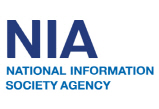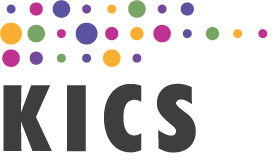Now 488 visitors
Today:866 Yesterday:853
Total: 2226
404S 103P 85R
2026-01-05, Week 2 |
| Member Login |
| Welcome Message |
| Statistics |
| Committee |
| TACT Journal Homepage |
| Call for Paper |
| Paper Submission |
| Find My Paper |
| Author Homepage |
| Paper Procedure |
| FAQ |
| Registration / Invoice |
| Paper Archives |
| Outstanding Papers |
| Author Homepage |
| - Paper Procedure |
| - Journal Procedure |
| - Presentation Tips |
|
| Proceedings |
| Program with Papers |
| Plenary Session |
| Tutorial Session |
|
| Presentation Assistant |
| Hotel & Travel Info |
| About Korea |
| Accommodation |
| Transportation |
| VISA |
| Other Infomation |
|
| Photo Gallery |
| Scheduler Login |
| Seminar |
| Archives Login |
|
| Sponsors |

|

|

|

|

|

|

|

|

|

|

|

|
|
|
|
|
|
2011
 |
Title : Introduction to WiMAX |
|
Time : Feb.13 (Sunday) 15:00~18:00 |
|
Speaker : Dr. Pooria Varahram
Pooria Varahram received his B.Sc. in electrical and electronics engineering from khaje nasir university of technology in 2002, his M.Sc. in telecommunications engineering from Tarbiat Modares university in 2004 and Ph.D. in wireless communication engineering from the University Putra Malaysia (UPM) in 2010.
He has more than 5 years of experience in designing and developing a range of electronic and telecommunication related projects.
He is now doing his Post PhD in UPM. His research interest is PAPR reduction in OFDM systems, Linearization of power amplifiers, microwave power amplifiers design.
Abstract :
Within the last two decades, communication developments have reshaped our daily lives.
Wireless communications has grown from an obscure, unknown service to an ubiquitous technology that serves almost half of the people on Earth.
WiMAX which stands for Worldwide Interoperability for Microwave Access is about to bring the wireless and Internet users to portable devices across the globe.
In its simplest form, WiMAX promises to deliver the Internet throughout the globe.
In this tutorial our main aim is to first introduce this service and explore it for advances in PHY layer.
Some features like Peak to Average Power Ratio (PAPR) and linearization are most interest topics of this tutorial. It follows with introduction to MAC layer, link and system level performance in WiMAX together with latest technology in WiMAX systems.
Briefly the tutorial covers the following areas:
1. Overview of WIMAX
2. WiMAX PHY layer
3. OFDM and OFDMA
4. WiMAX MAC Layer
5. PAPR in WiMAX
6. Linearization in WiMAX
7. Link and System level performance of WiMAX
|
 |
Title : Cooperative Communication Fundamentals and Coding Techniques |
|
Time : Feb.14 (Monday) 09:00~12:00 |
|
Speaker : Dr. Kiung Jung
Presentation file download(Click)
Dr. Kiung Jung is currently a member of senior research staff in Electronics and Telecommunications Research Institute (ETRI), Korea.
He received B.S. and M.S. degrees in Electronic Material Engineering from Kwangwoon University, Seoul, Korea in 1988 and 1990, respectively, and M.S. and Ph.D. degrees in Electrical and Computer Engineering from University of Florida, Gainesville, FL, in 2001 and 2006, respectively.
From 1990 to 1996, he was with ETRI, where he was mainly involved in the project of developing TDX-10 digital switching system, and CDMA Mobile Communication System.
From 2006 to 2007, he worked as a research director in Samyul Corp. where he was mainly involved in the project of Home Automation System development and Indoor RF field Tracer development funded by Korean Government (MIC).
From 2007 to present, he has been employed in ETRI as a senior researcher. His recent researches have been on MAC layer standardization in Cognitive Radio system, wireless channel access in WPAN, and cooperative communications. He is currently working on QoS enhancement for media transmission. Specifically, he is focusing on media-layer FEC and its application to relay channel.
He published several journal and conference papers. He is holding two US patents pending and three Korea patents pending related with wireless channel access and media transmission.
Abstract :
The transmitted signal in a wireless channel undergoes various types of degradations such as additive white Gaussian noise (AWGN), shadowing, and multi-path fading. The most usual approach for mitigating the effect of these degradations up to recently have placed emphasis on the physical layer signal processing and coding design for each single communication link between a transmitter and a receiver.
However, practically, many wireless communication systems contain multiple terminals that share a common medium, and information theory indicates that the wireless terminals can jointly use the medium as a shared resource instead of one that is divided orthogonally among pairs of terminals to enhance wireless channel capacity.
Spatial diversity gain can be attained by using multiple antennas to improve wireless communication performance without requiring additional wireless resources.
However, the spacing between antenna elements depends on the carrier wavelength, and this might often exceed the size of modern mobile radio. Cooperation among users can be an alternative means to achieve diversity in wireless networks.
Furthermore, in a wireless network, many terminals are distributed randomly to constitute a variety of network configurations and various links with having different link conditions.
It exploits cooperative communications among users for providing efficient schemes of sharing wireless resources to increase channel capacity or other communication performances.
Recently, cooperative communication techniques have been proposed that provided practical designs for wireless networks to exploit the shared medium. Much of the related work has focused on the relay channel, and the term “cooperative communications” is sometimes used to refer to relay channels.
However, the resurgence in interest in multi-terminal communications has also included other types of cooperation among terminals, and I use the term cooperative communications in this broader sense.
The focus of presentation is understanding fundamental concept and practical coding schemes for cooperative communications.
Basically, the presentation is divided in two sections. In first section, I will introduce information theoretical aspects of cooperative communication which can be theoretical basis for cooperative communication.
I will also present several basic schemes of relay transmission and iterative diversity. In second section, I will focus on schemes that can achieve performance close to capacity or the best known achievable rates in wireless networks by cooperative communications. I will discuss open problems in cooperative communications and how contributions in these areas may improve the performance of future wireless networks.
|
 |
Title : Future Internet Issues and Possible Solutions: Humans, Machines and Other Constrained Devices |
|
Time : Feb.15 (Tuesday) 15:00~18:00 |
|
Speaker : Dr. Dhananjay Singh
Dhananjay Singh received the B. Tech. degree in Computer Science and Engineering from VBS Purvanchal University, India in 2003. M. Tech degree in IT with spec. in Wireless Communication and Computing from IIIT-Allahabad, India in 2006 and Ph.D. degree in Ubiquitous IT from Dongseo University, Busan, S. Korea in 2010.
He is currently a PostDoc. Researcher in Division of Fusion and Convergence of Mathematical Sciences, at National Institute of Mathematical Sciences, S. Korea. He involved in research projects, BK21 in Ubiquitous Healthcare, Regional Innovation Project: Secure and Authentic RFID Reader/Writer, Digital Media using Signal System, and Developing Future Internet Network Model for research and development.
His research interests are in the area of Wireless communications, MANet, Routing, Mobility, Security, and Wireless Sensor Networks, Ubiquitous Healthcare, Body Area Networks, 6lowpan, ROLL routing and digital signal processing, embedded systems and wireless network.
He published more than 40 publications (patents, book chapters, journals, conferences) in the aforementioned areas. Currently, he is an Associate Editor, International Journal of Network Protocols and Algorithms for Smart Grids Protocols and Algorithms, USA.
Abstract :
During last decades, purpose of the internet usage deflected from its normal usage that thought before for peer to peer communication. Internet is the medium to provide global connectivity all objects and IPv6 protocol considered to be a solution, but still it requires improvement in direction particularly, mobility and multihoming, internet and IPv6 based USN (6lowpan), application oriented optimization etc.
Idea of internet services is to connect all the possible things globally while internet of services provides various functionally to support it as well as provides various services to users according their requirements as the future internet characterized with highly complex networks with numerous heterogeneous objects.
One possible solution is semantic technologies for interoperability and agent technologies for management of complex system. Toward this direction, ontological annotation and classification somehow solve problem of data representation and its storage, and provide interoperability in term of physical characteristics and time-space characteristics but still required much consideration regarding functional or behavioral interoperability and how to make it possible.
|
|
|
|
|
ⓒ Copyright 1999. ICACT (ISSN 1738-9445) & Global IT Research Institute(GiRI) All rights Reserved. Contact: office (at) icact . org Tel:+82-70-4146-4991
|
1713 Obelisk, 216 Seohyunno, Bundang-gu, Sungnam Kyunggi-do, Republic of Korea 13591
Business License Number : 220-82-07506, President: Thomas ByeongNam Yoon Ph.D. |
|
(13591)경기도 성남시 분당구 서현로 216 오벨리스크 1713호
(사)글로벌IT연구회 사업자등록번호 : 220-82-07506 대표자 : 윤병남
|
|
| |






